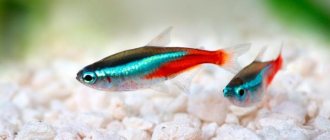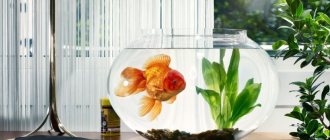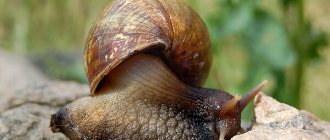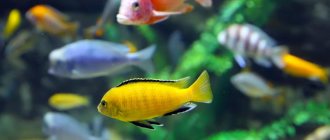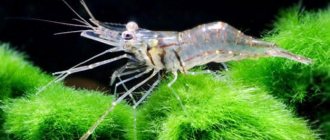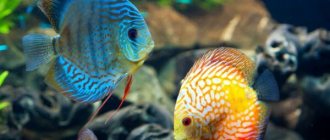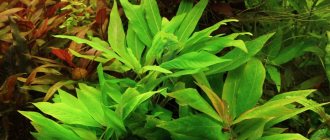Achatina Reticulata is a terrestrial mollusk that is very popular among snail breeders. Today, Achatina reticulata is one of the three unpretentious snails for keeping at home.
Firstly, they grow quickly, secondly, they are inexpensive, and thirdly, they are sociable and unpretentious animals. It is widely used in cosmetology, medicine and cooking.
Achatina Reticulata is sometimes called Achatina reticulata.
The snail received this name because of the color of its shell; brown spots, stripes and dots form an intricate mesh pattern on the light background of the shell.
Description of Achatina reticulum
The snail lives in countries with a tropical climate. In nature it grows up to 20 cm and weighs about 700 grams. The shell of the reticulum is ribbed, with a brown reticulate pattern consisting of dots and stripes. The apex and columella are white.
Achatina's body color varies from beige to dark brown. Achatina reticulata differs from other Achatina species in its rapid growth; by five months, its size can reach 15-16 cm in length. It is believed that active growth of the reticulum stops at 9 months, when the snail reaches puberty.
Unusual information
Achatina is difficult to classify as a classic pet. However, it has its advantages, as well as unusual habits and characteristics that the owner should be aware of. Among the most unusual information about these snails are the following.
- Ability to hibernate. The period of voluntary seclusion can last up to 6 months. The main reason for this is a decrease in ambient temperature to +8 degrees and below. During this period, the mouth of the shell is closed by a mucous valve.
- Ability to sing. In any case, this is what breeders call the sounds that Achatina makes. In fact, they resemble something between a whistle and a squeak.
- Deadly danger from salt and sugar. For Achatina, these substances in their pure form are truly poison.
- Suitability for food. In southern African countries, Achatina snails are eaten and valued for their high protein content and lack of fat.
- Sports talents. In the UK, street races for Achatina are organized and they attract a considerable audience, bringing the owners a chance for financial reward. True, we should not forget that at the same time, such snails are recognized as the slowest on the planet. But in the pursuit of fresh cucumber, they have no equal.
- The ability to move even along a razor blade. The mucous substance produced by the sole, mucin, makes it possible to perform such tricks without risking life.
- Myopia. Achatina's visibility range of objects is only 3 cm, but it distinguishes between light and shadow well.
- Special water absorption. Tropical mollusks, due to the climate, are accustomed to extracting water from the air, literally absorbing it with their bodies.
- Deafness. Achatina use touch as the main source of information received about the outside world. They have no hearing; the mollusks are completely deaf.
- Nose out. The tentacles of Achatina are its organ of smell, an analogue of the nose. But the mucous membrane is not inside, but outside. The sensitivity is quite high - the snail can smell odors 2 meters away.
- High intelligence. Of course, for the shellfish. Achatina recognizes the owner, remembers the location of objects, is able to think about the situation, and make decisions.
- Endurance and strength. On its shell, a snail can lift a load equal to 10 times its own body weight.
- Having 20,000 teeth. In fact, the mollusk does not chew, but scrapes its food - which is why it can be offered mineral stones to build a shell. The snail easily wears them off in a short time.
- Gigantic sizes. At home, the land snail grows a shell up to 20 cm in length. Larger individuals are found in nature. It is known that the largest Achatina reached 35 cm in length and weighed more than 2 kg.
- Incredible fertility. During its life, 1 adult individual can achieve the happiness of parenthood up to 4,000,000,000 times - this is how many eggs it leaves in clutches on average.
Where does Achatina Reticulata live?
Achatina reticulata is native to the tropical forests of Africa - Tanzania, Kenya and Zanzibar. In 1992, on the sand of African forests, biologist Georg Gassner found 8 reticulated Achatina, which later became the “ancestors” of domesticated snails. The reticulated Achatina is an African guest, which in Europe is kept only at home; due to climatic conditions, its survival in nature is impossible.
Subspecies Achatina reticulata
Achatina reticulata differs in three degrees of body color. Reticulata crosses only within its own species, maintaining its purity.
Achatina reticulata Albino body
Characterized by a milky white leg color and a standard shell color, it is one of the favorite representatives among snail breeders. The optimal temperature for keeping albinos is 28-29 degrees. It is believed that they could not survive in nature, they are too noticeable. Previously, it was believed that albinos often get sick, cannot tolerate transportation at all, and do not grow well at home, but this is a myth. Read about keeping albinos here.
Achatina reticulata Light head
It is characterized by a standard shell color and a light body color of the snail. Body color varies from cream to dark beige. The head of the mollusk is most often slightly darker than the color of the leg of the reticulum.
See more similar articles:
Is it possible to give snails milk?
What grass can be given to Achatina and stored for the winter?
Back Forward 1 of 36
Achatina reticulata Dark head
It is characterized by the dark color of the head and sometimes the body of the snail. The color of the leg varies from dark brown to black. However, the head of the reticulum is always darker than the body. Snail breeders often purchase them for their collection.
The color and mesh pattern on the ribbed shell of Achatina reticulata is always the same, regardless of its variety.
The shells of baby Achatina reticulata have characteristic cherry-colored stripes and dots.
Possible diseases
With proper maintenance and proper nutrition, snails should not get sick. There is no need to throw them or subject them to other mechanical stress. In the absence of external chemical, bacteriological and thermal irritants, Achatina will not be able to receive harm from the environment.
To be safe, a person just needs to wash his hands with soap after contact with the creature.
Main pathologies of snails:
- Mechanical - any sufficiently strong interaction.
- Chemical - contact with a caustic substance, namely citrus fruits, oxidation products, soap, etc.
- Thermal - a sharp directed impact of extremely high or low temperature.
- Bacterial – parasite activity. Organ prolapse may occur as a result of infection.
What and how to contain Achatina Reticulata
At home, retics are kept in a terrarium, rectangular aquarium or food container with a ventilated lid. The volume of the snail's home should be at least 20 liters. Soil is placed at the bottom of the terrarium. For example, coconut substrate, dry leaves of oak, birch or moss. There should be about 1/3 of the aquarium soil; it is necessary to maintain optimal humidity in the terrarium (70-80%), snail sleep and egg incubation. This article will help you choose soil.
Snails grow faster in high humidity and temperature.
Equip the snail's home with a shallow bowl of warm water, and irrigate the walls of the terrarium with boiled water once a day. Place dry branches and driftwood in a container; shellfish love to rest on them. Achatina reticulata feels great at a temperature of 26-28 degrees; an incandescent lamp or a thermal cord will help you maintain this temperature.
Cleaning of the terrarium is carried out once a week with full or partial replacement of the soil.
Achatina reticulata needs daily hygiene.
The shell and body of the mollusk are washed with warm water, then the shell is wiped with natural vegetable oil, preventing it from flaking and peeling. More about swimming is said here.
Feeding
The snail does not require additional care, and feeding consists of cutting vegetables, fruits, and herbs into small slices and placing them in the terrarium. Interestingly, in their native habitat, Achatina does not refuse animal food, so sometimes they can be pampered with chicken or minced meat. Ready-made food from pet stores is also suitable.
As food, snails are given pieces of eggplant, zucchini, cucumbers, sweet peppers, celery or watermelon. These animals should not be fed citrus fruits or other foods that are too acidic.
Fermentation and oxidation products, for example, cottage cheese or grapes, are unacceptable.
Food can be placed in the aquarium once every two to three days. If the owner of Achatina raises young animals, then he should add calcium to his food to promote the growth of a strong shell. Egg shells and high-quality calcekas are quite suitable for this.
This is a special food that is prepared for young animals by mixing several varieties of steamed cereal, wheat bran, gammarus, eggshells, Biovetan, and dry fish food.
What and how to feed Achatina Reticulata
Achatina is predominantly a herbivore. Its main diet consists of vegetables and fruits, greens.
Reticulata are also fed with a mixture of different cereals, grain flakes and bran; they are an excellent source of vegetable protein. For normal development and growth, the mollusk also needs animal protein - dried gammarus and daphnia, bone meal and food for aquarium fish. The snail is given protein both in its pure form and in the form of a mixture of several products ground in a coffee grinder. They pamper their pets with various delicacies. Products containing calcium are also necessary for the health of Achatina. Its sources are sepia, food chalk, eggshells, and shell rock.
To form a beautiful and durable shell, calcium must be available to it at all times.
Salt, sugar, semolina, citrus fruits, onions, garlic, pasta, flour are prohibited foods for Achatina reticulata.
What to feed small Achatina reticulata snails
Newborn reticulates are fed lettuce or cabbage leaves, generously sprinkled with ground eggshells or chalk. Over the course of several days, they eat the remains of their own egg shell. At the same time, they are given grated vegetables and grain supplements.
A month after birth, young Achatina are fed in the same way as adults. This type of Achatina has a good appetite and rapid growth. Read more about feeding babies here.
Keeping at home
Keeping a snail at home does not require much expense or hassle. For arranging Achatina fulica's house, the standard is a plastic bottle or an old aquarium. A cardboard box is not suitable for this purpose: from constant humidity it will become soaked, and a snail can make a hole in it and crawl away. It is always necessary to place a lid on top of an improvised house, leaving a small gap for oxygen to enter.
Achatina are awake in the dark, so their home should include a place where they can hide from the light
It is also worth keeping in mind that snails are very sensitive to the day-night cycle: they are awake at night, but during the day they like to hide from the light. Therefore, it is worth making a secluded place in your home in the form of a snag or a large stone.
The diet of Achatina in most cases consists of plant foods. They love to feast on apples, cucumbers, bananas, watermelon peels, tomatoes, and potatoes. This type of shellfish requires large amounts of calcium carbonate. If it is deficient, individuals can gnaw through the shells of their relatives. In addition, you can add animal products: egg whites, poultry.
Reproduction of the giant reticulata
All Achatina are hermaphrodites, which means they contain male and female genital organs. Mollusks reach sexual maturity at 9 months of age, but it all depends on the conditions of detention. It is believed that at this age the active growth of the snail stops or stops. Reticulata are very prolific, they lay 3-4 clutches per year. The clutch contains from 100 to 300 snow-white, oval-shaped eggs, 6-8 mm in size. The babies hatch 3-4 weeks after mating.
How to care for Achatina reticulata eggs
The reticulum masonry is carefully transferred to a separate container with moist soil. You should not take snail eggs with your hands; the warmth of your palms is detrimental to the embryos. The snail eggs are covered with soil, which is irrigated daily with warm water. They also maintain a constant temperature (28-29 degrees). More information about the laying of Achatina.
Several years ago, scientists discovered that Achatina reticulata does not interbreed with other species of Achatina, only with representatives of its own species.
Reticulated Achatina, under good conditions, can live in captivity for about 6-7 years, although in the natural environment it lives for more than 10 years.
Peculiarities
The snails we are going to talk about are very unusual. They have an exotic appearance and there are many rumors surrounding them. For example, it is generally accepted that in some countries there are strict penalties for keeping these individuals due to the fact that they are omnivorous and can destroy almost all crops. It's fair to say that the rumors are unfounded. Indeed, in some states snails are banned because they are considered pests.
The usual habitat of mysterious creatures is the coast of North Africa. It has a humid and warm climate. They are found mainly in sown fields, forests or swampy areas. Their life requires a temperature of 20 to 25 degrees. If it drops to 3 degrees, the snails experience suspended animation.
These individuals have very beautiful and varied colors. They have a well-developed sense of smell. Their shell may have a reddish, brown, yellow or light yellow pattern. The body, which is in the shell, can be yellowish, dark or light (the shell has mimicry, changes color depending on the color of the surrounding environment), and four tentacles necessarily rise on the head. The short ones are the sensory organ, and the long ones are the eyes. The mollusk has no hearing, but this defect is well compensated by excellent vision and touch.
By the way, with the help of smell, the snail finds food, a partner for mating, and also senses approaching danger. The height of the conical shell is usually approximately twice its width, and consists of 9-11 whorls. Inside the body of the mollusk there are lungs, a heart, kidneys, and even a rudiment of brain tissue. Radula is the teeth of Achatina. They look like a toothed band. The snail breathes through its skin. Vision is very good and allows you to view space at a distance of one centimeter. With the help of vision, illumination is also recognized.
The individuals we describe grow quite quickly. Here is a growth table that will show everything clearly.
| Achatina immaculata\Achatina panther | 1 month – 2 cm | 2 months – 4 cm | 3 months – 6 cm | 4 months – 10 cm |
| Achatina fulica | 1 month – 2+ cm | 2 months – 4+ cm | 3 months – 6+ cm | 4 months – 10+ cm completes growth by year |
| Achatina reticulata | 1 month – 3+ cm | 2 months – 7+ cm | 3 months – 10+ cm | 4 months – 14+ cm completes growth by year |
| Archachatina marginata ovum\suturalis | 1 month – 2-3 cm | 2 months – 4-5 cm | 3 months – 6-7 cm | 4 months – 8-9 cm 5 months 10+ cm |
Behavior of Achatina Reticulata
The reticulata snail is a very active animal; it remains active not only at night, but also during the day. She is like a child, she is interested in everything. The snail stretches its head with enviable curiosity and tries not to miss anything. Achatina is unpretentious in care and nutrition. Scientists have discovered short-term memory in the reticulum. The snail easily gets accustomed to eating according to the time and place where its feeder with food is located. The snail also recognizes its owner by smell and happily makes contact with him. Achatina reticulata is a social animal; they often sleep together on snags or in a feeding trough. Retics love to communicate and study surrounding objects in the palm of the owner; by the way, there is no allergy to snail mucus. They are widely used for anti-aging procedures in beauty salons and at home.
Achatina reticulata is used for cosmetic procedures. Retic mucus promotes the healing of wounds and burns, smoothes rough scars and deep wrinkles. And there are legends about the medicinal properties of snail meat.
Many snail lovers keep Achatina reticulata as an ideal pet. And you?
Useful properties of snails
Let us immediately reassure representatives of the fair sex who are prone to allergic reactions: the mucus of Achatina snails is hypoallergenic, and therefore it can be safely used by everyone, without exception.
So, speaking about the beneficial properties of Achatin mucin, one cannot fail to notice first of all that this composition is capable of rejuvenating the skin of the face. At the same time, expression and age wrinkles are reduced and smoothed out, the skin is regenerated and moisturized. Achatina mucus can reduce even dense scars, heal wounds, relieve various skin diseases and lighten age spots.
Snail mucin has antibacterial properties and is widely used in the fight against psoriasis, varicose veins, bronchitis and upper respiratory tract diseases. Mucus applied to the sore spot helps relieve pain.
Other beneficial properties of snail mucus in cosmetology:
- promotes tissue regeneration after burns;
- affects acne, stretch marks and scars;
- softens and heals the skin;
- cleanses the skin of dead cells;
- tightens pores;
- prevents the development of inflammatory processes;
- has antioxidant and antibacterial properties;
- gets rid of warts.
The meat of Achatina snails is also eaten. This diet helps improve the functioning of the gastrointestinal tract, helps with stress and normalizes the functioning of the central nervous system.
Shellfish cells are included in many drugs created to combat various serious diseases, such as Parkinson's disease and epilepsy. Snail mucus is widely used in the creation of cosmetic products.



